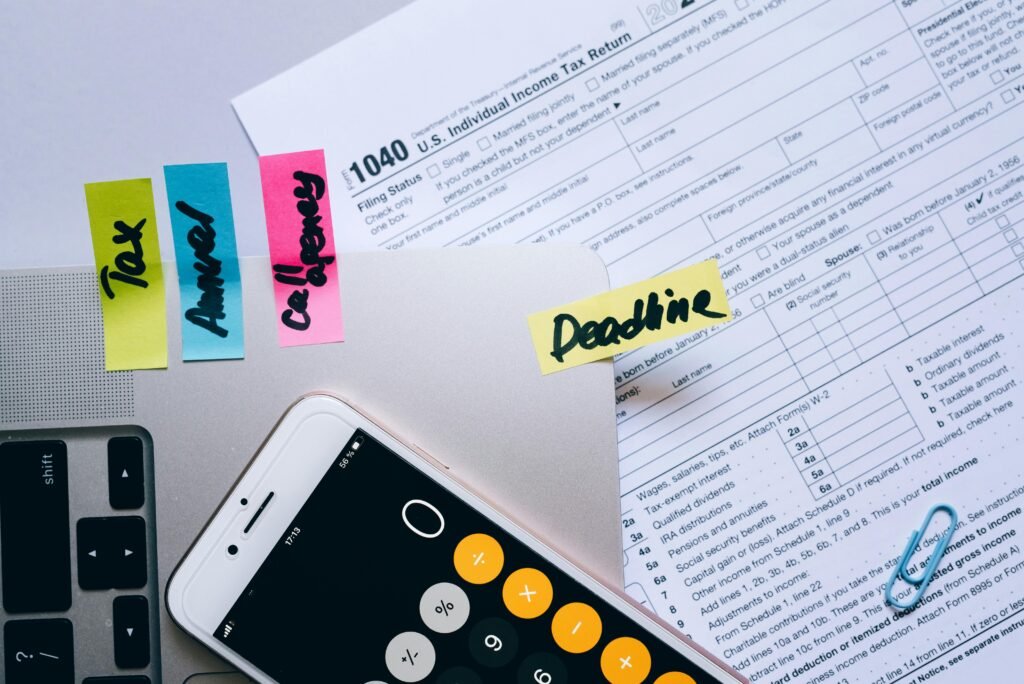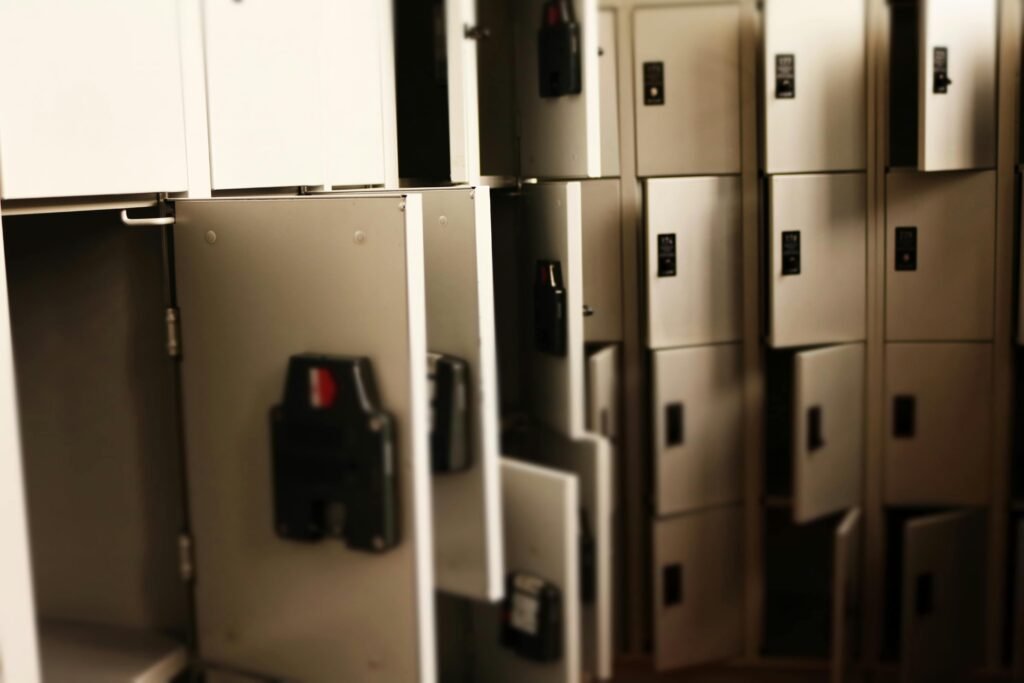Legal Requirements by Country
Disclaimer: This guide is educational and not legal advice. Regulations change, and interpretations vary by officer and port. Always verify with official sources before you travel and keep documentation on hand.
Why crossing borders with precious metals requires preparation
If you’ve ever breezed through customs with a backpack and a smile, traveling with precious metals will feel like a different game. Gold and silver are lawful to carry in most jurisdictions, but they’re heavily regulated in how they’re declared, taxed, and documented. Add in inconsistent officer familiarity, sanctions rules, and different treatment for coins vs bullion vs jewelry, and you’ve got the recipe for delays—or worse, seizures—if you show up unprepared.
This guide gives you a nomad-ready framework: how to categorize what you carry, what forms to file, which thresholds matter, what to say (and not say), and when shipping beats carrying. Where possible we cite official customs or government pages and call out high-risk or high-scrutiny countries. You’ll also find practical checklists and templates to minimize friction.
Universal principles across jurisdictions
Declaration thresholds (cash-equivalent rules)
Many countries require a declaration when you enter/exit with cash or “cash equivalents” that meet or exceed a threshold (often $10,000 or €10,000). Critically, not every country treats gold as “cash.” For example, the U.S. excludes bullion and most precious-metal coins from the “monetary instruments” definition (so no FinCEN 105 for bullion/coins), but you still declare them as merchandise on the customs form.
The EU, by contrast, explicitly includes investment-grade gold as “cash” for the external border declaration: gold coins (≥90% purity) and bullion (≥99.5% purity) must be declared at €10,000 or more.
Customs forms and procedures
Expect two layers:
- A cash/cash-equivalent declaration if your items meet the “cash” definition and the threshold (e.g., EU external border).
- A goods declaration if you’re importing merchandise (e.g., bullion purchased abroad) subject to duty/VAT or proof-of-ownership checks, even below cash thresholds.
Documentation requirements (receipts, invoices, certificates)
Bring:
- Original purchase receipts (dealer, date, product, serial number for bars if applicable).
- Certificates of authenticity/grading (for numismatics).
- Prior customs declarations if you’re re-entering with items you previously exported.
- Insurance docs and a concise packing list.
Penalties for non-declaration
Expect detention/seizure and fines. In the EU, undeclared “cash” can be detained and penalized under national law. In the U.S., failing to file required reports (when applicable) can lead to seizure and civil/criminal penalties—CBP/FinCEN cite potential fines and even imprisonment in serious cases.
United States regulations
Entering/exiting the U.S.: the $10,000 FinCEN 105 question
- Bullion and most precious-metal coins are not “monetary instruments.” Therefore, no FinCEN 105 is required solely for carrying bullion/coins, regardless of value. You must still declare them as merchandise on CBP Form 6059B.
- Cash/monetary instruments over $10,000 (e.g., currency, traveler’s checks) do require FinCEN 105 at entry/exit.
Penalties (for reportable items): CBP/FinCEN warn of seizure and potential criminal penalties (up to $500,000 and 10 years in egregious cases).
What counts toward the limit
- Counts: cash and “monetary instruments” (checks, certain negotiable instruments).
- Does not count: gold bullion and most precious-metal coins as “monetary instruments,” but they must be declared as goods and may be subject to inspection.
TSA screening procedures
TSA doesn’t regulate customs, but you’ll pass security screening. Precious metals are generally permitted in carry-on; be ready for secondary screening. Request private screening if needed.
Sanctions and prohibited origins
CBP lists Cuba, Iran, and Sudan as prohibited origins for gold coins/bullion; such items are refused entry under OFAC sanctions.
Tip: Keep a one-page “proof packet” with receipts, product list (weights/purities/serials), and any prior declarations. It speeds up secondary inspections and supports lawful possession.
European Union regulations
External border: €10,000 rule includes certain gold
At the EU external border, you must declare “cash” ≥ €10,000. The EU’s definition of cash includes:
- Gold coins of ≥90% purity, and
- Gold bullion of ≥99.5% purity.
Penalties: Member States can detain cash and impose “effective, proportionate and dissuasive” fines for non-compliance. Some countries also have national rules for movements within the EU—check local guidance.
Intra-EU travel
Generally no external cash declaration for movements between EU countries (though police/customs can request disclosure). Always verify local nuances.
VAT note: Importing non-investment gold/silver as goods can trigger VAT/duties. Investment gold has specific exemptions (country-specific). Always check the final destination tax rules before you carry.
United Kingdom (post-Brexit)
- Cash declaration: Declare £10,000 or more when entering/leaving Great Britain from/to a non-UK country. (Northern Ireland aligns with EU external rules for movements to non-EU destinations.)
- VAT on investment gold: “Investment gold” is generally VAT-exempt under UK law (specific criteria apply). Bring documentation proving investment-grade status.
Practical: If returning to the UK with metals you already owned, keep proof of prior ownership/export (receipts, earlier declarations). It’s not a formal requirement in every case, but it prevents disputes about import VAT.
Asia-Pacific regulations
Singapore
- Cash/CNIs: Declarations apply to currency/BNIs ≥ SGD 20,000; precious metals aren’t “cash,” but imports as goods can trigger GST unless the items qualify as Investment Precious Metals (IPM). Most IPM gold meeting purity/form requirements is GST-exempt.
- Action: If carrying non-IPM or numismatic items, plan for GST and have receipts ready.
Hong Kong
- CBNI declaration: HKD 120,000 threshold for cash/BNIs at entry; gold bullion/coins are not “CBNI.” As a free port, HK generally has no duties on precious metals, but they’re still goods subject to inspection.
Thailand
Thailand is high-scrutiny for bullion. While personal jewelry in reasonable amounts usually falls under personal-effects allowances, gold bars/bullion are often treated as restricted and may require permits under exchange-control rules. If you attempt to import bullion without proper authorization, customs can hold the items. When in doubt, don’t carry bullion into Thailand—buy/sell locally or use a licensed shipper. Verify with Thai Customs in advance.
Australia
- Cash: Declare AUD 10,000 or more in currency; bullion/coins aren’t “cash.”
- Goods/GST: Imports over threshold require a declaration; investment precious metals are GST-free if they meet purity/form tests (ATO).
New Zealand
- Cash: Declare NZD 10,000 or more per the Border Cash Report rules.
- Goods/GST: Investment precious metals may receive specific GST treatment; check NZ Customs/IRD if importing as merchandise.
Latin America regulations
Mexico
Declare USD $10,000+ in cash/BNIs when entering or exiting. (Failure to declare is an offense.) Gold is treated as goods, not “cash,” so plan for goods declaration where applicable.
Colombia
Travelers must declare USD $10,000+ (or equivalent) upon entry/exit using DIAN Form 530. As with most countries, metals are goods—be prepared to show receipts and purpose.
Argentina
Entry/exit with less than USD $10,000 is permitted without declaration; above this, declaration is required, with additional controls on egress. For metals carried as goods, keep receipts and expect scrutiny.
Chile
Declare more than USD $10,000 (or equivalent) in cash/BNIs. Imports as goods can trigger duty (6% ad-valorem) + VAT (19%) unless exempt. Jewelry for personal use may be tolerated within traveler limits; bullion is treated as merchandise.
Middle East regulations
United Arab Emirates (UAE)
Travelers must declare if carrying cash, financial instruments, precious metals, or precious stones worth AED 60,000 or more, via the official Afseh platform.
Saudi Arabia
Declare SAR 60,000 or more when carrying cash, negotiable instruments, precious metals, gemstones/jewelry. ZATCA confirms explicit coverage of gold bullions, precious metals at this threshold.
Israel
Declare 50,000 NIS or more in means of payment (cash/BNIs). Precious stones are separately high-scrutiny; bring purchase docs and anticipate questions if carrying significant value.
Documentation best practices
What to carry every time
- Purchase evidence: invoices with product details, bar serials, purity.
- Product proofs: grading certificates (numismatics), assay cards (bars).
- Prior customs proofs: copies of previous declarations for “returning with same goods.”
- Insurance: policy certificate plus valuables schedule.
- Travel memo: a one-page summary listing each item (type, weight, purity, serial), purpose (personal holdings), and your contact details.
Pro tip: Store a digital vault (encrypted) with scans of receipts, serials, and photos. Keep one printed packet for the inspection desk.
Practical tips for air travel
Carry-on vs checked
- Carry-on for small, dense items (coins/bars), using non-descript packaging.
- Checked baggage increases loss/theft risk and can trigger unobserved inspections.
Secondary screening
- Expect private room inspection requests. Stay factual: “Personal investment holdings; here are receipts and serials.” Avoid words like “cash” unless you’re actually declaring cash. TSA does screening; customs does declarations.
What to say (and not say)
- Say: “Personal investment, not for sale. Here are the receipts. No restricted origins.”
- Avoid: “I’m here to sell” (triggers import/tax questions) unless you intend to sell—and then be ready to declare as merchandise and satisfy KYC at buyers.
Red flags that trigger extra scrutiny
- Large/opaque quantities with no documentation.
- Frequent cross-border movements with metals.
- Inconsistent stories (e.g., “gifts” but you carry assay-card bars).
- Sanctioned origins (U.S. prohibits certain sources like Iran/Cuba/Sudan).
When in doubt, ship via bonded/insured couriers rather than carry.
Shipping vs carrying personally
When shipping makes sense
- You’re moving sizeable value or multiple pieces.
- Destination has strict carry rules (e.g., Thailand for bullion).
- You need chain-of-custody, insurance, and customs brokerage.
Bonded couriers and insurance
Reputable logistics providers can handle customs clearance, KYC/AML, and full-value insurance. Obtain:
- Waybill + commercial invoice
- Insurance certificate
- Import/export clearance docs
Cost is higher than personal carry, but far lower than seizure risk or travel disruption.
Legal consequences of non-compliance
- United States: Failure to file required reports (for cash/monetary instruments) can lead to seizure and serious penalties (up to $500,000 and imprisonment, in aggravated cases).
- European Union: Detention of undeclared “cash” and national penalties; rules expressly require dissuasive sanctions.
- Saudi/UAE: Explicit declaration regimes for precious metals by value; non-declaration can lead to confiscation and fines.
Country snapshots (at a glance)
This table highlights declaration triggers and notable notes for travelers. Always verify current rules before travel.
| Region/Country | Declare Threshold & Scope | Notes |
|---|---|---|
| United States | $10,000 for cash/monetary instruments (FinCEN 105). Bullion/coins are not “monetary instruments,” but declare as goods on CBP 6059B. | Sanctions restrict certain origins (e.g., Iran/Cuba/Sudan). TSA may privately screen. |
| EU (external border) | €10,000 for cash including gold coins ≥90% and bullion ≥99.5%. | Penalties include detention/fines; intra-EU movements may have national rules. |
| UK (GB) | £10,000 cash declaration for entry/exit to non-UK. | Investment gold VAT-exempt if criteria met (keep proofs). |
| Singapore | SGD 20,000 for cash/BNIs (not metals). IPM gold often GST-exempt; non-IPM can attract GST. Benoit & Partners+1 | |
| Hong Kong | HKD 120,000 CBNI declaration at entry (cash/BNIs; metals not CBNI). | Free port; metals treated as goods. |
| Thailand | Personal effects permitted; bullion frequently treated as restricted; seek prior authorization or avoid carrying. | Verify with Thai Customs/Bank of Thailand before travel. |
| Australia | AUD 10,000 cash declaration; IPM can be GST-free as goods. | Declare imports above threshold; keep receipts. |
| New Zealand | NZD 10,000 cash declaration; metals are goods. | Check GST treatment if importing. |
| Mexico | USD 10,000 cash/BNIs declaration at entry/exit. | Metals are goods; prepare invoices. |
| Colombia | USD 10,000 cash/BNIs via Form 530. | DIAN monitors compliance; keep docs. |
| Argentina | Under USD 10,000 no declaration; above must declare; extra controls on egress. | Non-compliance leads to enforcement actions. |
| Chile | USD 10,000 cash/BNIs declaration. | Imports: 6% duty + 19% VAT (general rule) unless exempt; bullion treated as merchandise. |
| UAE | AED 60,000 cash/valuables (includes precious metals/stones) via Afseh. | Declare online before arrival/departure. |
| Saudi Arabia | SAR 60,000 for cash, negotiable instruments, precious metals/jewelry. | Evidence of lawful ownership may be requested. |
| Israel | 50,000 NIS means of payment declaration. | Diamonds/precious stones high-scrutiny; carry proofs. |
Special scenarios
Inheritance/estate items
Carry probate documents or inheritance affidavits and appraisals. Some countries treat inherited metals as merchandise on first import.
Temporarily exporting then returning
Keep a copy of outbound declaration (where available) or CBP Certificate of Registration (other goods), plus receipts and photos to claim returned-goods relief where applicable.
Business vs personal travel
If your purpose is commercial (buy/sell), expect KYC/AML checks, VAT/duty assessments, and documentation beyond personal effects.
Dual citizenship
Compliance is based on jurisdiction crossed, not your passport alone. Follow the destination/transit rules.
Practical scripts
At security (private screening):
“These are my personal investment holdings (gold coins/bars). I’m prepared for any required inspection. I have the receipts and serials here. No prohibited origins.”
At customs (U.S. entry):
“I’m carrying gold bullion/coins as personal property. They are not monetary instruments; here is my CBP 6059B and the receipts.”
At EU external border:
“I’m carrying gold bullion worth over €10,000; here’s my cash declaration and invoices.”
When shipping (bonded courier) beats hand-carry
Choose bonded, insured logistics when:
- You’re moving multiple kilos or high value.
- Destination has restrictive carry rules (Thailand; certain LATAM routes).
- You need chain-of-custody, assay verification, or door-to-vault delivery.
Ask for: full value insurance, customs clearance service, import tax estimates, and tracking.
Your pre-travel compliance checklist
Before you go
- Identify your route and jurisdictions (origin, layovers, destination).
- Check whether your items fall under cash (EU external border) or goods (most places).
- Prepare documents: receipts, serials, certificates, prior declarations, insurance.
- Verify sanctions/prohibited origins for destination (e.g., U.S. bans Iran/Cuba/Sudan origin gold). help.cbp.gov
- Decide carry vs ship; for high-value or restricted corridors, choose bonded courier.
- Flying with bars? Pair compliance with proper insurance coverage.
At the airport
- Pack metals in carry-on, inconspicuously, and request private screening if needed.
- File cash/cash-equivalent declarations where required (EU €10k with qualifying gold; U.S. only for actual currency/monetary instruments >$10k).
- Keep your proof packet handy.
On arrival
- Be consistent: personal investment, not for sale (unless you plan to sell and are prepared for goods import).
- Record any reference numbers/receipts from customs.
- Once you arrive, choose a storage method that matches the risk.
After travel
- Scan and store all paperwork in your document vault.
- If you sold abroad, retain buyer KYC receipts and tax forms for your records.
FAQs
Is it illegal to fly with gold?
No—carrying gold is legal in most countries, but you must declare when thresholds or “cash” definitions are met, and you must document lawful ownership.
Do I need FinCEN 105 for gold in the U.S.?
No for bullion/coins (they’re not “monetary instruments”). Yes if you’re carrying cash/monetary instruments > $10,000. Always declare gold as goods on CBP 6059B.
Does the EU treat gold as “cash”?
At the external border, yes for gold coins ≥90% and bullion ≥99.5%. Declare ≥ €10,000.
Can my gold be seized if I don’t declare?
Yes. The EU can detain undeclared “cash”; the U.S. can seize and impose civil/criminal penalties for failures related to required reports.
Should I carry or ship?
If you’re moving high value, entering restrictive jurisdictions, or need traceable insurance, choose bonded courier.
If mobility is the priority, consider other portable stores of value.



